THERE ARE THREE PRIMARY DIFFERENCES BETWEEN ASHKENAZIT AND PROPER ISRAELI SEPHARADIT
PREFACE
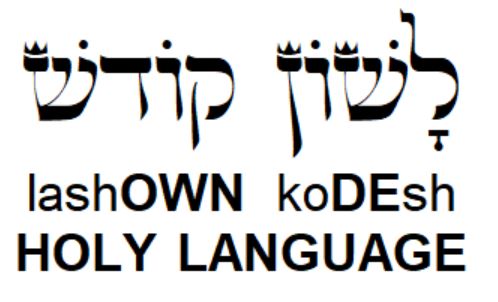
- QAMATZ KATTAN AND QAMATZ GADOL
Older books did not have the ability to print unique symbols for the two variations of the Qamatz vowel and many if not most people did not know when to pronounce it in the proper way. Today with Modern Typography we do have the ability to use unique symbols for each variant of the vowel although there are different style for different publishers. This Qamatz is pronounced “ah” as in “far”. The style to the right is my standard. The one to the far right is called a Qamatz Gadol, or big Qamats, even though visually and audibly it is smaller. The vowel to the left is a Qamatz kattan or small Qamatz in spite of its visual and audible size. This vowel is pronounced “aw” as in “bawl”.
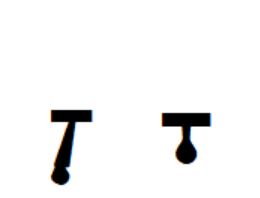
2. TAV IS ALWAYS PRONOUNCED “T” WITH OR WITHOUT THE DAGESH DOT
Originally the Tav with the dot was pronounced T and the one without the dot (dagesh) was pronounced “s” or “th” as in “thin”. But today in the official Sepharadi dialect of Israel both symbols, with or without the dot, have a “T” sound.
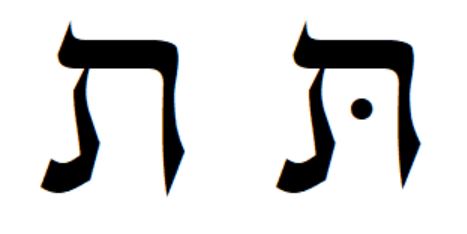
3. MIL’EL STRESS AT BEGINNING OR MIDDLE OF WORD AND MIL’RA STRESS AT END OF THE WORD
In the example to the right we show the location of stress or emphasis with the larger letters. In the Ashkenazit pronunciation was at the beginning or middle of a word. In the official Sepharadit pronunciation of Israel the emphasis is usually at the end of the word. In our example we use a normal pronunciation for the “sha” in “shalom” and place the emphasis on the “LOM” at the end of the word.
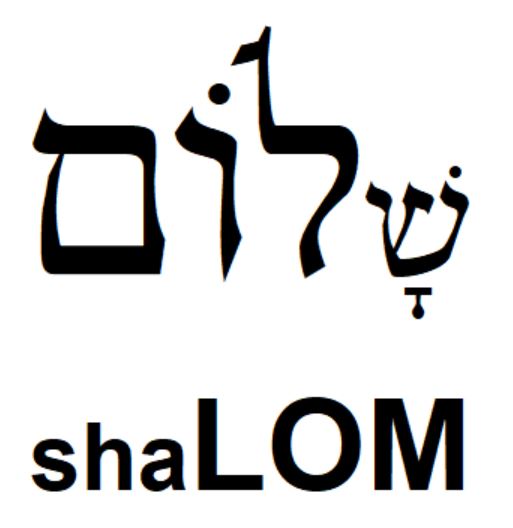
POSTSCRIPT
When I lived and worked in Israel I was very involved with Hebrew English word processing and served on national committees. It was also natural since I was both a principal systems engineer and multi-lingual linguist. During this period language processing was evolving rapidly and Unicode was established to facilitate the implementation of computerized language support with multiple languages at the same time. In doing so regions of characters were reserved for each of the languages so they could coincide in international communications of all sorts. So Hebrew got its language space and people began working on assigning letters, vowels, special symbols, etc to the space and even cover some of the requirements of Yiddish although it should have gotten its own space and not detracted from the Hebrew space. They even reserved unique variations found only in the Aleppo Codes and so forth. But there were two vowel families that did not have assignments to distinguish the visual instances for vowels that had differing pronunciations much like the case of “c” in English in words like “call” and “cell” where it take on a “K” sound one time and an “S” sound another. So English is ambiguous and speakers much learn when to pronounce the “C” as a “K” and when to pronounce it as an “S”. We have to live with it. But in Hebrew we could have resolved it easily by making 2 variations of the vowels that could be easily distinguished by everyone and they would not have to learn esoteric rules of Hebrew grammar like I did to master the subject. Also we have have more than enough unused slots in the Hebrew region of the Unicode. So on 2016-04-18 I submitted a proposal to the Unicode committee outline how to resolve this problem. Unfortunately instead of directly acting upon this they required me to go through Va-ad HaLashon of the official Israeli Language Committee with my proposal. So I respectfully submitted my proposal to them also. Never in my life could I have imagined that this committee was so incompetent and intent on sabotaging the proposal. They indicated that vowels were a dying breed and that no one uses them any longer and there is no need for this since no one reads or uses the Bible anymore and that too is obsolete. Granted newspapers do not use vowels much and Israelis generally know how to comprehend the words without the vowels. But the flip side is that Hebrew is deteriorating as few people learn the grammar and the majority of people speak “street Hebrew” or in my opinion “gutter Hebrew” riddled with horrible mistakes. This also extends through rabbis and cantors who do not know the rules of grammar and mispronounce everything.
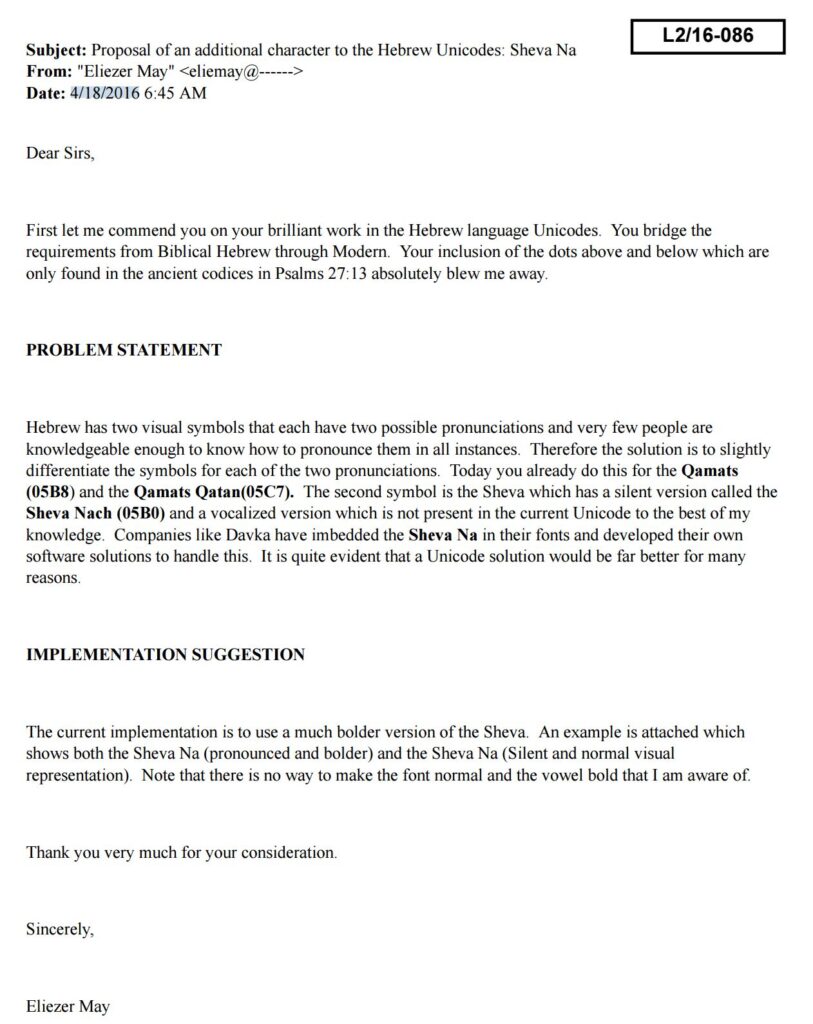
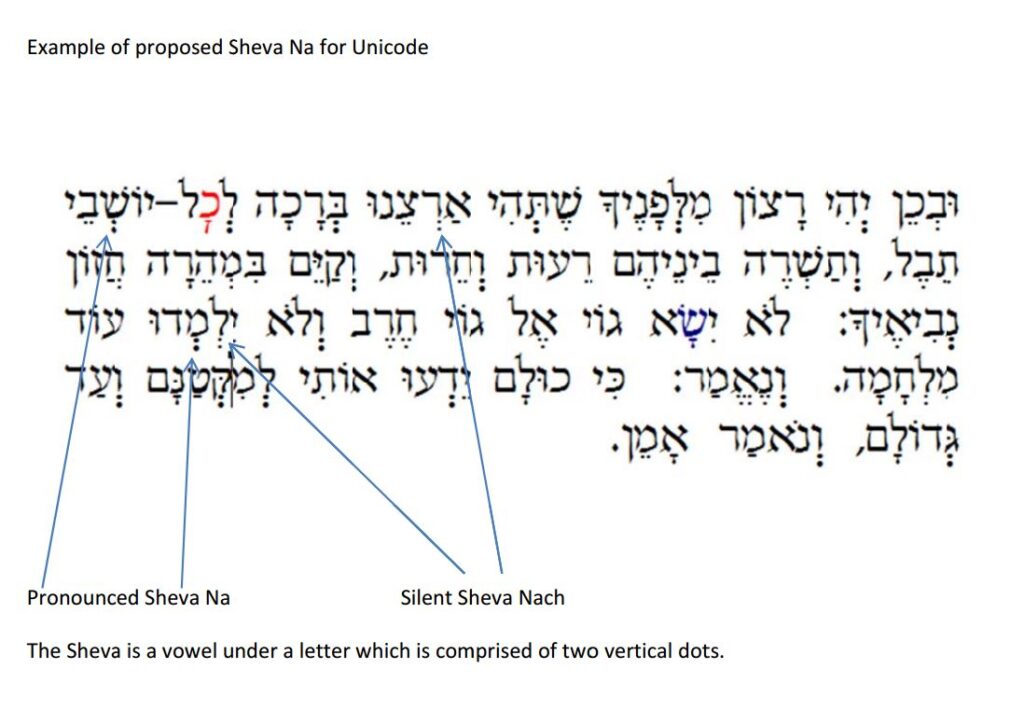
CONCLUSION
Today I use DavkaWriter 7 which meets all my needs with all of the modifications that I made to the Hebrew fonts to bring them up to my standards. The company was the leading company in Hebrew Biblical typography but was eventually sold to someone else. Today there is no new development and one could say it is dead but it still works for me and meets all my needs. p.s. I am working on producing the most beautiful unambiguous version of the Holy Scriptures along with all my new discoveries and explanations. Unfortunately the Unicode version falls short and nothing can be done about this. But it does not impact me.
